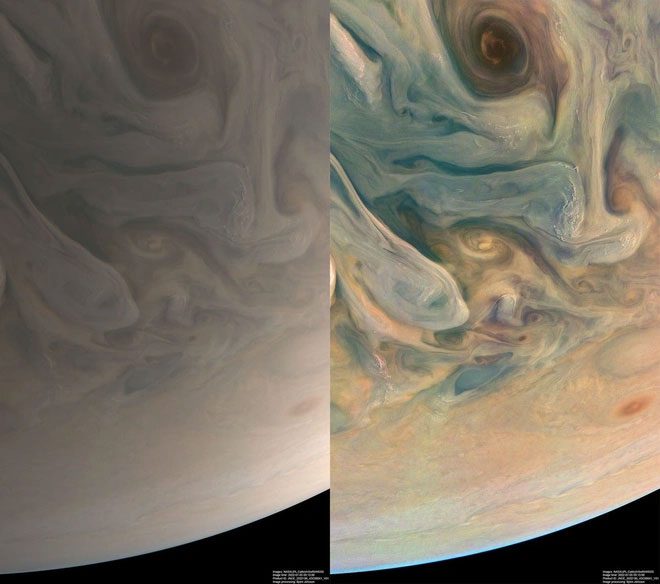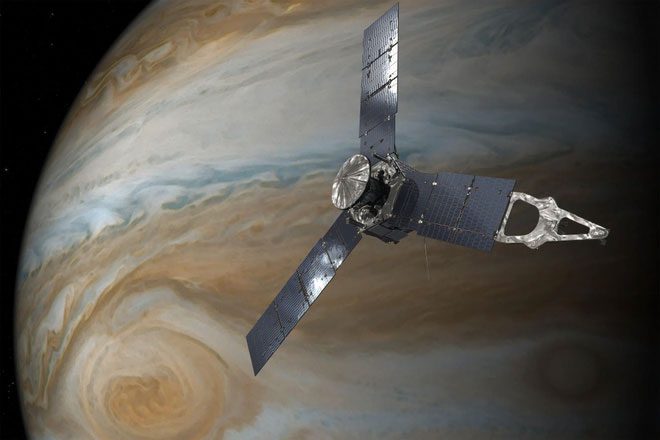Images captured by the Juno spacecraft in July reveal the complex nature of Jupiter’s atmosphere.
The U.S. National Aeronautics and Space Administration (NASA) recently shared images of Jupiter taken on July 5, processed from data collected by the JunoCam instrument aboard the Juno spacecraft. These colorful images showcase intricate details within the atmosphere of the planet.
According to Space, the photo was taken during Juno’s 43rd close approach to Jupiter. At the time of capture, the spacecraft was approximately 5,300 kilometers from the top of the planet’s massive cloud cover, traveling at a speed of 209,000 km/h, and positioned at about 50 degrees North latitude.

Jupiter image captured by Juno with near-original colors (left) and processed software (right). (Image: NASA).
The images were processed by independent scientist Björn Jónsson in Iceland. After downloading the raw data from Juno, he created two sets of images. The left image, with near-original colors, shows what humans would see if they were in Juno’s position. The right image has enhanced contrast and color saturation, highlighting the complex structures in Jupiter’s atmosphere.
Each color patch in the right image indicates differences in chemical composition across various regions of the atmosphere, revealing the structure of storms within Jupiter’s clouds. Smaller clouds, located higher in the atmosphere, are also depicted in the images.
Launched in 2011, Juno began its journey to explore Jupiter in 2016. Since then, the spacecraft has produced stunning images of the atmosphere, storms, and massive gas clouds of Jupiter.

The Juno spacecraft launched in 2011. (Image: NASA).
Juno orbits the planet in an elliptical path, completing a full orbit every 43 days. During some missions, Juno descends to approach the clouds and atmosphere of Jupiter. The closest Juno has ever descended is 3,300 kilometers from the gas clouds, enabling NASA to create a stop-motion video of Juno’s approach to Jupiter.
Initially, NASA planned to “retire” Juno in 2021, but the spacecraft’s operational period has since been extended to at least 2025. Images captured by JunoCam are publicly shared with independent scientists for processing and analysis, and can be accessed on the Southwest Research Institute’s website in San Antonio.

















































